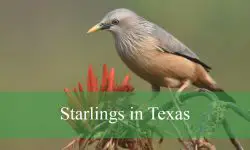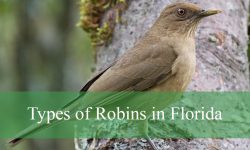Montana boasts a diverse moth population, showcasing 22 distinct types characterized by their furry appearance. From the striking Polyphemus Moth with its large, vivid eyespots to the Woolly Bears, the state’s moths exhibit a variety of colors and patterns. Each species, like the Furry Dagger Moth or the Isabella Tiger Moth, contributes to Montana’s rich insect tapestry, captivating observers with their unique furry textures and captivating characteristics.
Different Types of Montana Moths Furry
Fall Webworm Moth
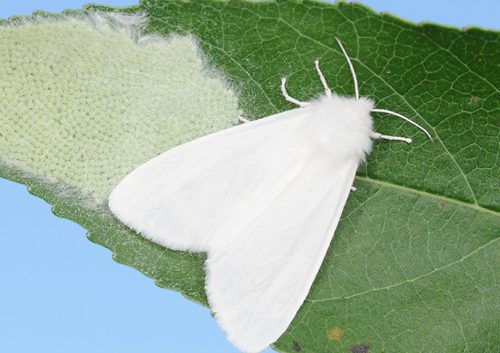
The Fall Webworm Moth (Hyphantria cunea) boasts a 1.4-1.7 inch wingspan, featuring white or gray/black forewings with rectangular or wedge-shaped spots. Identified by a white hairy body and occasional orange markings, these moths lay up to 1,500 iridescent green eggs on leaves. Caterpillars, generalists feeding on 100+ hardwood tree species, create tents on branch tips for sheltered feeding, conserving heat and avoiding predators. Found in Montana from April to September, northern areas witness one annual brood, while southern climates may have two or three. Females lay eggs and perish. Fall’s last brood overwinters as a hard brown cocoon in leaf litter, continuing metamorphosis in spring.
Yellow-collared Scape Moth
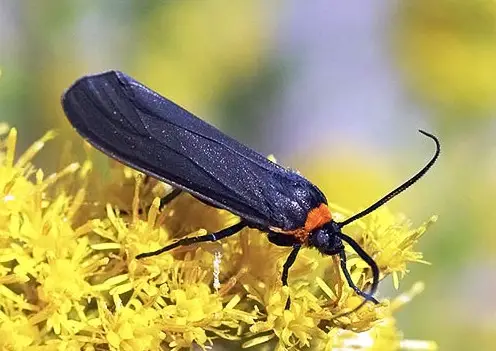
The Yellow-collared Scape Moth (Cisseps fulvicollis) showcases a 1-1.5 inch wingspan, black forewings, and bodies with an orange or yellow collar. Common in Montana, these day-active moths frequent wet meadows, parks, prairies, gardens, and forest edges, serving as effective pollinators. Their wasp-mimicry coloring deters predators during flower visits. Active from April to October, they may have one to three generations depending on the regional climate. The final brood overwinters as immature caterpillars in self-made cocoons, primarily crafted from their body hairs.
Io Moth
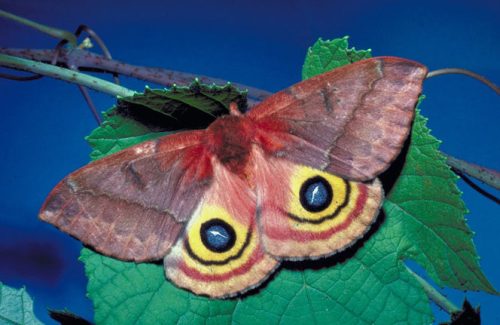
The Io Moth (Automeris io) boasts a 2.5-3.5 inch wingspan, with males featuring bright yellow bodies and wings, while females display reddish-brown or purple bodies and forewings. Both sexes exhibit large black eyespots on hindwings. Found in Montana, these moths employ striking eyespots as a defense, distracting and startling predators, even effective on humans. Active in May and June in northern regions, with two to three broods in the south (February to September). Nocturnal and non-feeding adults are drawn to outdoor lights at night. Caterpillars, adorned with venomous spines, move in distinctive “trains” and mature from orange/yellow to vibrant green.
Salt Marsh Moth
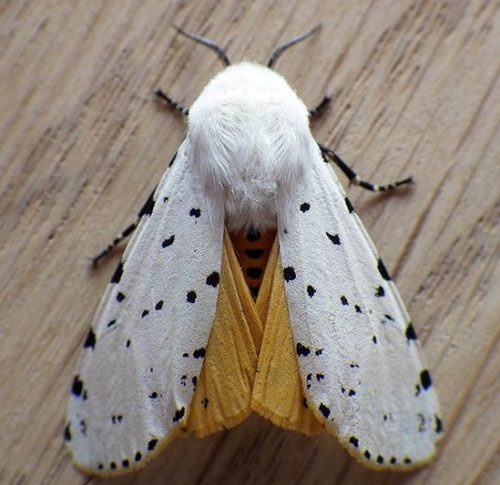
The Salt Marsh Moth (Estigmene acrea) features a 1.75-2.69 inch wingspan with white forewings and black spots, and orange hindwings in males or white in females. Despite their attractive appearance, their caterpillars are notorious agricultural pests, targeting crops like corn, tomatoes, tobacco, cotton, and various vegetables and fruits. Active from May to August in Montana, these moths have one to four broods annually, depending on the region. Caterpillars demonstrate a unique “windsurfing” ability, using silk strands as parachutes to escape threats.
White-lined Sphinx
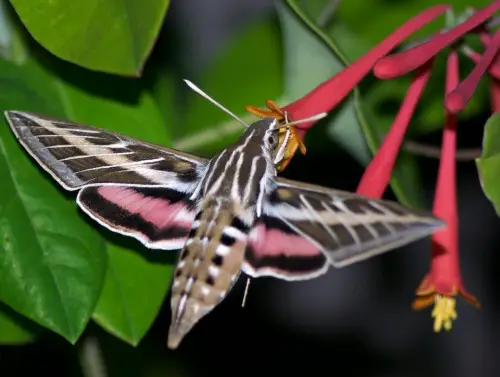
The White-lined Sphinx Moth (Hyles lineata) in Montana, often mistaken for hummingbirds, boasts a 2-3 inch wingspan with a stout, furry brown body featuring six white stripes. These moths exhibit hummingbird-like hovering, swiftly sipping nectar from Cardinal Vine, Jimsonweed, and various flowers with their long proboscis. Females lay hundreds of eggs on host plants in spring, and occasional caterpillar outbreaks, moving en masse, precede metamorphosis. Caterpillars pupate underground, emerging as adult moths after two to three weeks.
Large Yellow Underwing
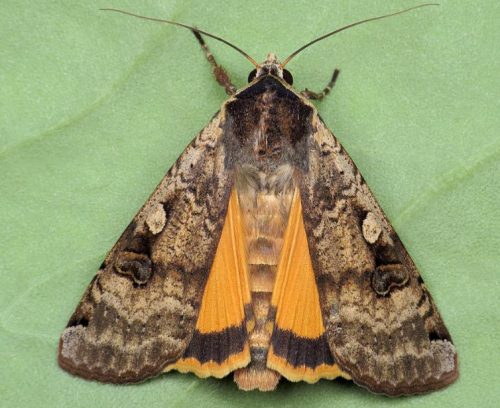
The Large Yellow Underwing (Noctua pronuba) in Montana, despite its straightforward name, features a 1.57-2.36 inch wingspan with light or dark brown forewings and yellow-orange hindwings adorned with a black band. These moths, common in various habitats, display a flash of color when taking flight, confusing potential predators. Thriving in open areas, urban spaces, fields, and parks, they are nocturnal and attracted to outdoor lights. With a longer lifespan than many moths, males live around 55 days, females about 75 days, but they only produce one generation annually.
Ceanothus Silk Moth
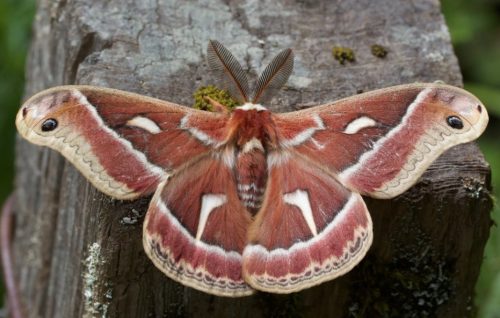
The Ceanothus Silk Moth (Hyalophora euryalus) in Montana, arguably the most beautiful moth, showcases a 3.5-5 inch wingspan with bulbous orange bodies, white stripes, and reddish-brown wings featuring distinctive markings. Their appearance varies, but the comma-shaped wing marking is a key identifier. Inhabiting diverse locations like coastal forests and woodlands, these moths have one annual brood between January and July. Caterpillars, once mature, create cocoons on host plants, overwintering attached to twigs and emerging as adult moths in spring.
Spotted Tussock Moth
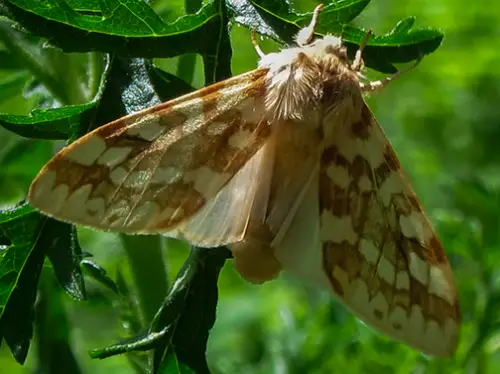
The Spotted Tussock Moth (Lophocampa maculata) in Montana boasts a 1.38-1.69 inch wingspan, with yellow or tan forewings and plain cream or yellow hindwings. In the tiger moth family, they exhibit alternating dark and light color patterns. Polymorphic, these moths and their caterpillars come in various color variations. Thriving in deciduous forests, they show regional preferences in their caterpillar’s choice of tree species. After about two months of feeding, caterpillars pupate in brown silk cocoons attached to leaves, overwintering to emerge as adults the following spring.
Alfalfa Looper
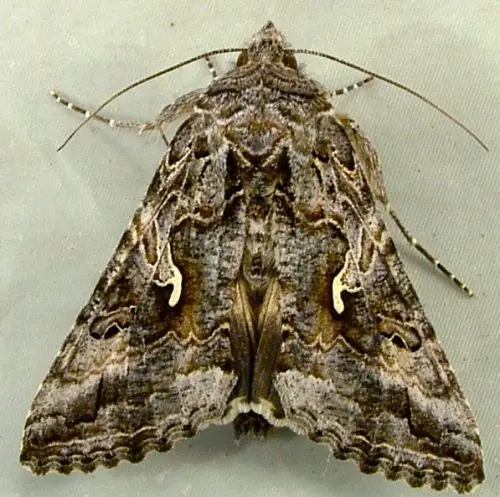
The elusive Alfalfa Looper (Autographa californica) in Montana has a 1.42-1.65 inch wingspan, with mottled pale gray forewings and silvery-white fish-hook-shaped spot, and hindwings transitioning from pale gray to dark sooty gray or black. Camouflaging in open habitats, their intricate patterns and grayish coloring aid in blending with surroundings. Active day and night, they feed on nectar from low-growing plants, visible around outdoor lights at night. In southern areas, observed from February to November, northern regions witness activity from May to October. With multiple annual broods, their short lifecycle spans just 30 days from birth to death.
Police Car Moth
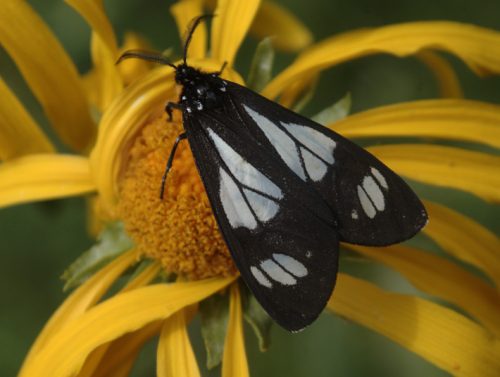
The Police Car Moth (Gnophaela vermiculata) in Montana, with an average 2-inch wingspan, features black wings with striking white patches outlined by black veins. Their bodies and heads, adorned with white spots and bright orange around wing bases and forelegs, make them remarkably beautiful. Beyond aesthetics, their bold coloring serves a vital purpose as a warning signal to predators. These moths consume alkaloids and synthesize toxic biogenic acids, deterring potential threats. Possessing a tymbal organ for ultrasonic clicks, they disrupt bat echolocation, ensuring safe day or night activities. With a single annual brood, females deposit eggs on leaves, hatching in as little as seven days, and overwinter in the caterpillar phase before pupating the following season.
Western Tent Caterpillar Moth

The Western Tent Caterpillar Moth (Malacosoma californica) in Montana boasts a 1-2 inch wingspan with brown, tan, yellow, or gray wings and distinctive lines. With a single annual generation, females lay 150 to 250 eggs in fall, covered with spumaline for protection. After three to four weeks of maturation, caterpillars overwinter before pupating into moths. Named for the silken tent shielding them during extreme cold, these caterpillars, during outbreaks, can defoliate trees, but recovery is usually swift. Their tree preferences vary regionally, influenced by their specific location.
Forest Tent Caterpillar Moth
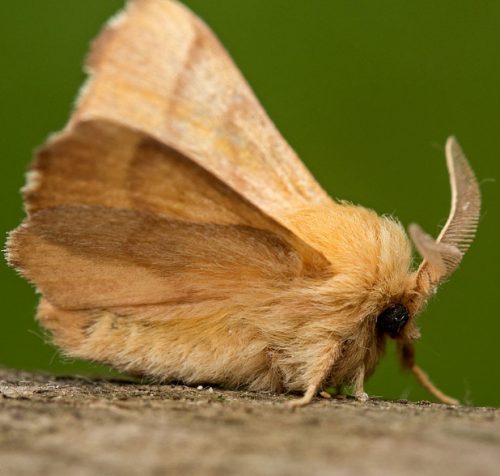
The Forest Tent Caterpillar Moth (Malacosoma disstria) in Montana features a 1-1.75 inch wingspan with yellow, tan, or buff-brown wings, displaying parallel dark lines on forewings. As the most widely distributed tent caterpillar in the state, their populations fluctuate cyclically, with outbreaks occurring every 6-16 years, sustaining high levels for 4-6 years. Active in July, these moths live for ten days, refraining from feeding. During outbreak years, clusters may be seen around outdoor lights. Unlike their counterparts, Forest Tent Caterpillars don’t construct true tents; instead, they spin silk mats on tree trunks or branches when at rest.
Pale Beauty
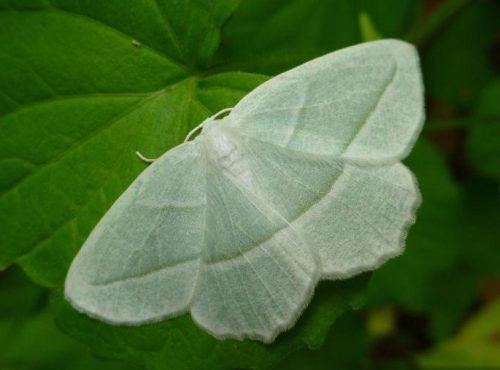
The Pale Beauty moth (Campaea perlata) in Montana, with a 1.1-2 inch wingspan, showcases a distinctive pale green to grayish-white coloration, fading to yellow with age. Adorned with faint dark grayish lines accented by white, these moths stand out in their subtle elegance. Active from late spring to early autumn, particularly around outdoor lights, they inhabit deciduous woodlands with ample host plants. With one generation in the north and two in the south, these moths overwinter as caterpillars on host trees, maturing into easily visible reddish-brown to black pupae on winter trees.
Isabella Tiger Moth
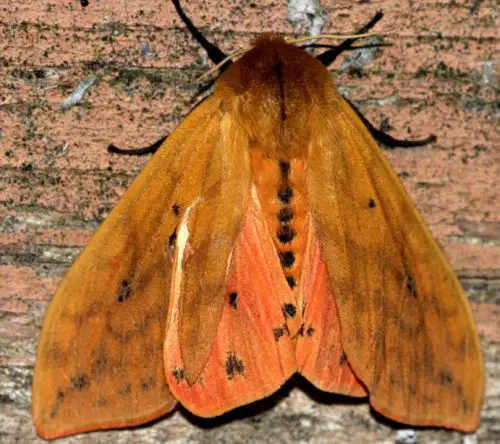
The Isabella Tiger Moth (Pyrrharctia Isabella) in Montana, with a 1.75-2.5 inch wingspan, displays orange-yellow to yellowish-brown coloring, adorned with sparse black spotting on wings, a line of black spots down the abdomen, and bright orange forelegs. Adaptable to diverse habitats, these moths have a fascinating lifecycle, surviving even in the Arctic. As caterpillars, their hearts stop, and they produce a cryoprotectant, enabling winter survival. After pupating in cocoons, adult moths emerge, mate, lay eggs, and perish within days. The caterpillars, known as Wooly Bears, roll into balls when threatened. Their clicks, produced by a tymbal organ, serve as warnings and may disrupt bats’ echolocation. Legend suggests Wooly Bears predict winter severity based on their bands, with more orange indicating milder winters and more black suggesting harsher conditions.
Virginian Tiger Moth
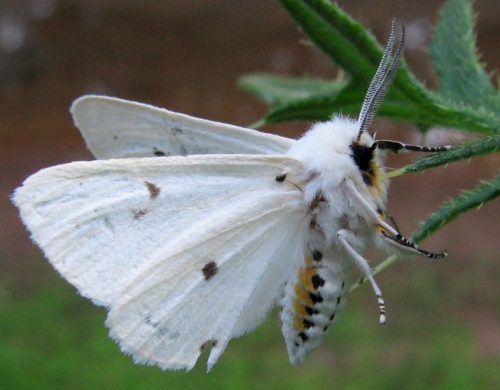
The Virginian Tiger Moth (Spilosoma virginica) in Montana, with 1.25-2 inch wingspans, features pure white wings dotted with black spots and abdomens displaying yellow stripes and rows of black dots. Found in diverse habitats like hardwood forests, rainforests, agricultural areas, grasslands, and urban spaces, these moths are often drawn to porch lights at night. Mating presents a challenge, prompting unique communication methods. Females emit pheromones using a special organ, and males, equipped with feather-like antennae, sense these chemicals. Males zig-zag in search of females, mating with multiple partners. With several yearly broods, the last overwinters as caterpillars.
Polyphemus Moth
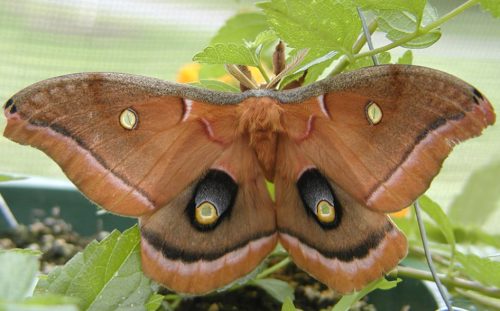
The Polyphemus Moth (Antheraea polyphemus) in Montana, with 4-6 inch wingspans, showcases upper wings in reddish-brown, gray, light brown, or yellow-brown, featuring a large yellow eyespot encircled by blue on each hindwing. Recognizable for their owl-like pattern, these moths use it to distract and startle predators. Inhabiting forests, orchards, wetlands, and urban areas, they have a short lifespan of about four days as adults. Emerging ready to mate, females emit pheromones, and males, equipped with large feathery antennae, locate them. Devoted to procreation, they don’t eat, lacking a mouth.
American Dagger
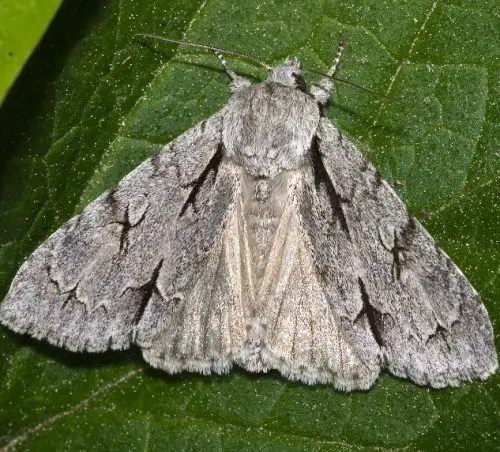
With 2-2.6 inch wingspans, the American Dagger (Acronicta americana) in Montana is characterized by fine grayish-white hair on its wings and upper legs. These dagger moths are the biggest in the state, adorned in elaborate black and white patterns such as checkerboards and zigzags. Their preference for deciduous trees leads them to habitats like forests, swamps, parks, backyards, and playgrounds. They get their name from the dagger-shaped markings on their forewings. They usually have one brood a year in the north, but they can have two or three in the south. The caterpillar stage is present from July to October and is active from April to September.
Corn Earworm Moth
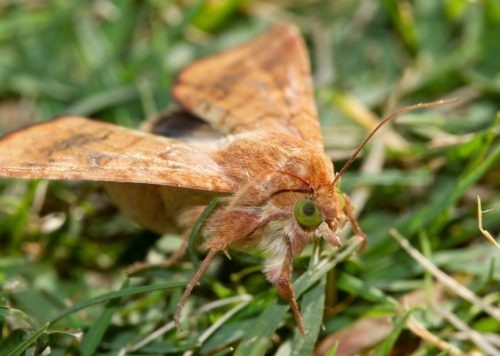
Many people consider the Corn Earworm Moth (Helicoverpa zea) to be among the most destructive pest moths in North America. By attacking crops like corn, cotton, tomatoes, asparagus, cantaloupe, and other fruits or legumes, it causes large economic losses. Even though the majority of its large-scale damages are concentrated in areas where the species overwinters, certain of the US’s northernmost habitats are unaffected. The species is distinguished by its hairy brown body, light and dark brown wings, and darker edges and inner white sections on the hindwings.
Dot-Lined White
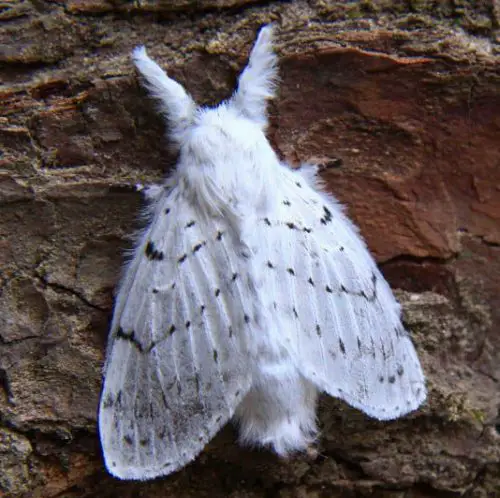
The Dot-Lined White (Artace cribrarius) shares many host trees with the Southern Flannel Moth, particularly favoring oak and wild plum species in the Eastern United States. Recognizable by its predominantly white wings and body, it features short black stripes along the wings and a distinctive fluffy texture on both the upper and lower body. The species primarily causes tree damages during the summer, extending up to October.
Large Tolype Moth
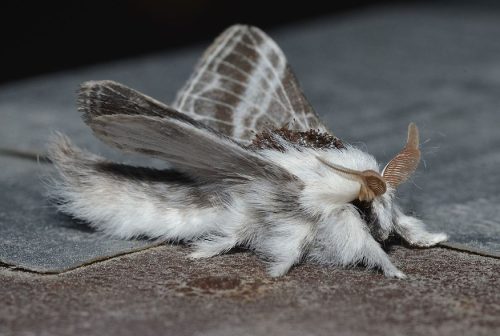
The Large Tolype Moth (Tolype velleda) commonly inhabits trees like poplar, aspen, and linden. Its upper body is densely covered with long white and gray hairs, while the lower body features long but sparse hairs. The wings display shorter gray and white hairs, and its antennae have a fuzzy feather-like appearance. This species has a single brood per year, predominantly found in the expansive territory of the Eastern parts of North America, where trees like orchard apples and linden thrive.
People Who Read This Also Read:

